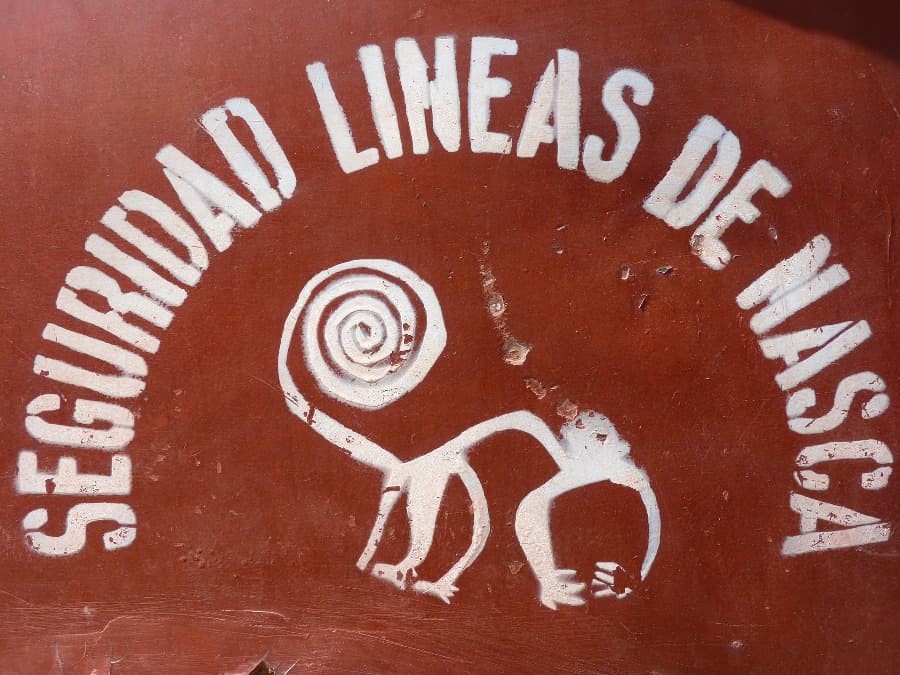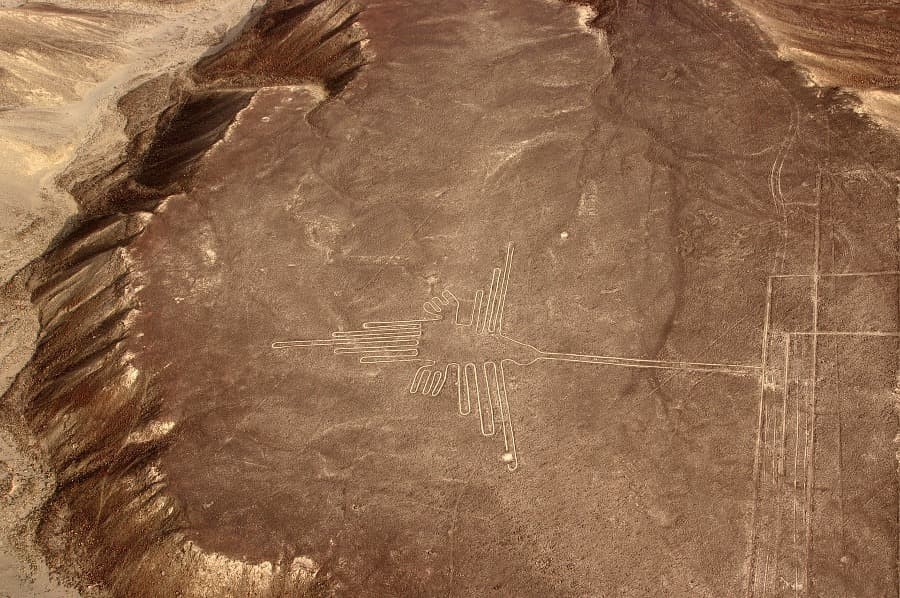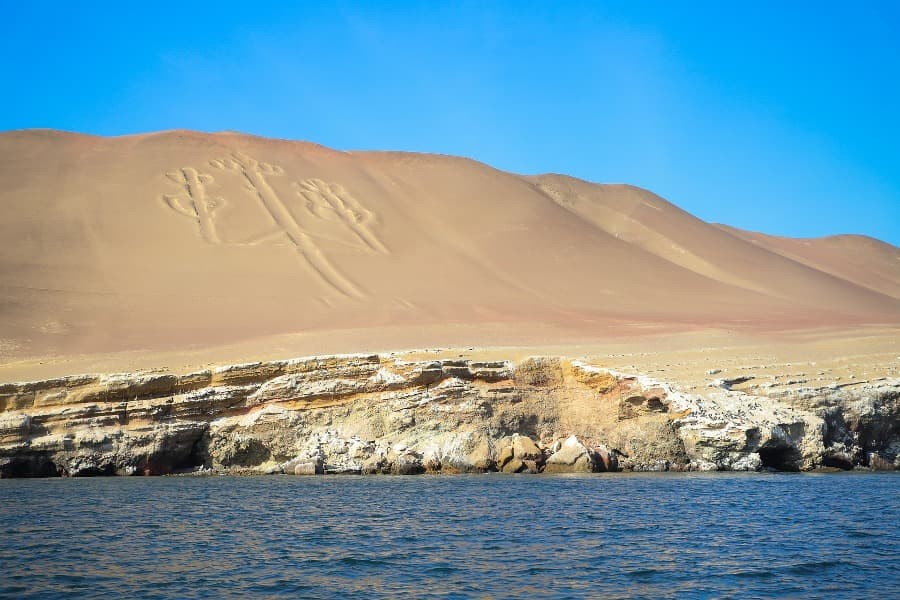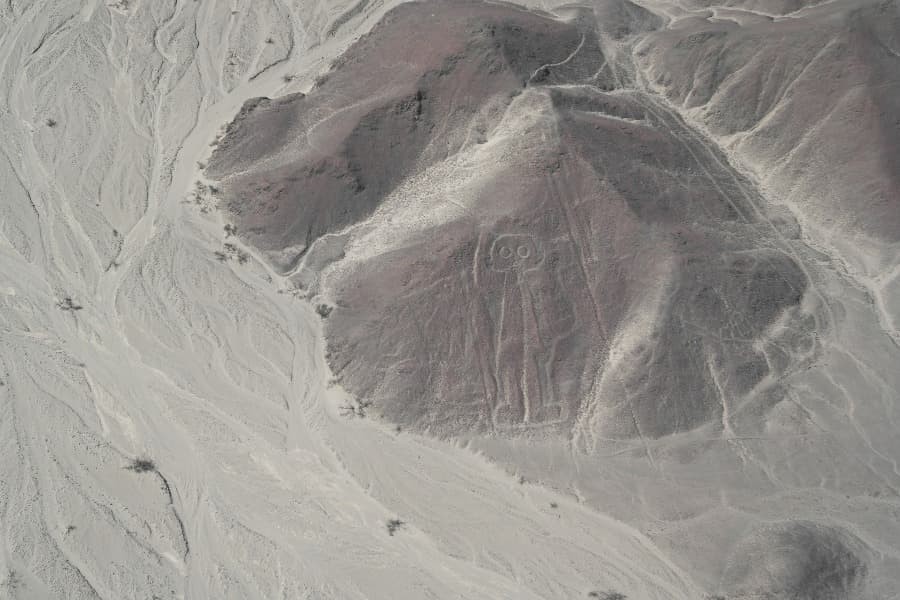The Nazca Lines are formed by hundreds of geoglyphs located in southern Peru, in the Nazca Desert. They cover an area of approximately 520 square kilometers. These lines were created by the Nazca civilization, and it is estimated that they were made between 500 B.C. and 500 A.D., so they were not created all at once. This can be observed as some figures overlap each other. It wasn’t until the beginning of aviation in the 1930s that they were discovered because it’s difficult to appreciate these drawings from the ground.
In 1993, they became part of Peru’s cultural heritage, and in 1994, the Nazca Lines were declared a World Heritage Site due to the uniqueness of these drawings and with the aim of protecting and preserving this site.

Some curiosities about these lines that you can discover during your volunteer experience
What types of figures do we find?

The Nazca geoglyphs have different shapes, including geometric figures, human figures, animals, plants, and labyrinths. There are drawings of birds, such as the pelican or the seagull, which are over 250 meters long. Some of the most famous figures include the condor, the spider, the hummingbird, the monkey, the lizard, and the astronaut.
These geoglyphs were created by removing the top layer of the surface, which is made of alluvial material. This layer is about 15 to 20 cm thick, and beneath it is a stratum of about 40 to 50 cm, which is white/yellowish in color. Therefore, by removing the top layer, these contrasting lines were formed against the rest of the surface, which is brown in color.
How were these geoglyphs made with such precision?

The technique used to create figures with such precision remains a mystery. One of the most incredible yet well-known theories is that they were drawn with the help of aliens. There is another much more plausible theory, which explains that the Nazca civilization could rise to see the figures from the air. This theory suggests that they knew how to make balloons or kites to fly over these lines and thus refine them. This theory is supported by the fact that Nazca drawings of balloons have been found, and there are also remnants of very light fabrics that could have been used to make them.
The meaning of these gigantic figures is also unknown. One theory suggests that they were a giant calendar, based on astronomical observations. María Reiche, also supports and shares this theory. Reiche was a German mathematician who spent much of her life protecting, conserving, and studying these geoglyphs. In Peru, she is known as the Lady of Nazca because, thanks to her work, these lines have been preserved and have become internationally known. That’s why the aerodrome from which the planes fly over the lines is named after her. Additionally, there is also a museum in Nazca dedicated to her life and research.
Why did they draw these lines on the ground?

It is theorized that the purpose of these lines was to invoke water, as small cavities have been found in the geoglyphs, where religious offerings with animals and agricultural products have been found. Due to the dryness of the area, it is believed that these offerings were meant to make the gods bring rain.
It is a very special place in the world, due to its uniqueness and the mysteries surrounding it. We recommend visiting this desert and flying over these gigantic figures while being a volunteer in Peru; it is an unforgettable experience just like your experience in any of the volunteer programs found in this country.
What volunteer programs do we find in Peru?
Currently, Cooperating Volunteers offers 5 volunteer programs in Peru. Among them, we find the teaching volunteer program, which consists of helping the teacher give lessons to children with disabilities at the Special Basic Education Center. The children are between 2 and 5 years old, and the tasks you would perform in this program include playing games and activities, teaching them English, and assisting the teachers in whatever is needed. On the other hand, if you have studied or are studying a health-related degree, you may be interested in the medical program, where you can perform tasks depending on your experience, and outreach activities will also be carried out.
In Trujillo and Cusco, we find the women’s empowerment program, where the self-esteem of women will be worked on, and they will be taught and given tools to improve their possibilities of finding a job.
We also find the environmental program, where workshops and talks will be held to raise awareness about the environment. Tools will be given and they will be taught how they can contribute to this cause. Finally, the animal rescue program aims to help dogs that have been abandoned or are homeless. The tasks to be carried out include walking dogs, helping with feeding and care, as well as performing maintenance tasks at the shelter.
Live the international volunteer experience and take the opportunity to visit the mysterious and unique Nazca lines!




